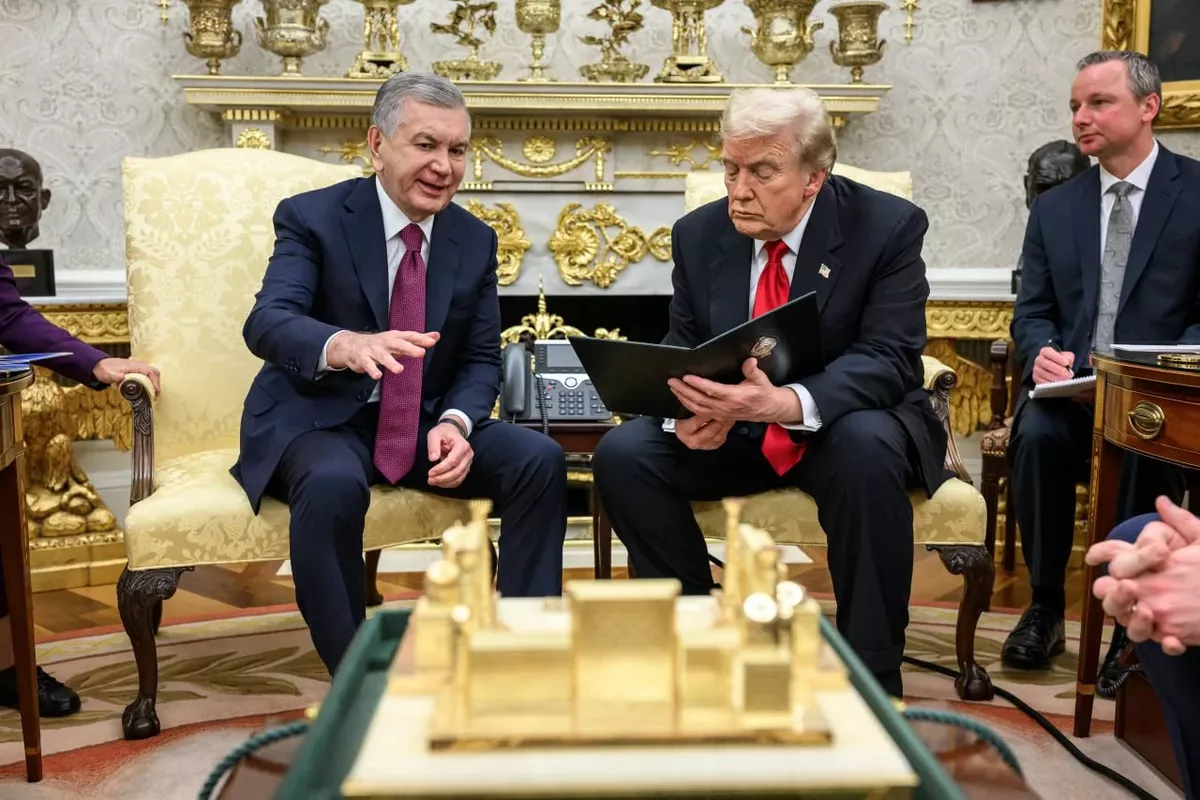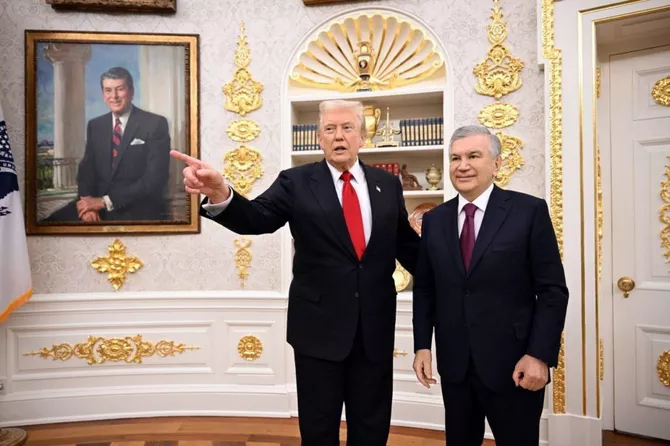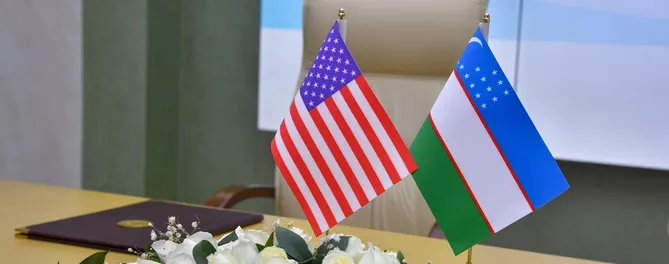
photo: Zamin.uz
Marking a significant milestone in Central Asia’s evolving geopolitical landscape, Uzbekistan and the United States have taken an important step toward deepening their partnership. The recent Central Asia-U.S. Summit (C5+1) in Washington, along with high-level bilateral talks, culminated in what both sides hailed as a new era of cooperation - not only in trade and investment but also in technology, energy, and security.
President Donald Trump, writing on his Truth Social account, described the outcome as an “incredible trade and economic agreement,” highlighting Uzbekistan’s intention to purchase and invest nearly $35 billion over the next three years, and more than $100 billion over the next decade, in strategic American sectors. These include critical minerals, aviation, infrastructure, agriculture, energy, and information technology, among others.
Expressing gratitude to President Shavkat Mirziyoyev, Trump emphasized that this partnership would usher in “long-term and productive relations” between the two nations - a sentiment many analysts interpreted as a signal of Washington’s renewed interest in Central Asia, particularly as the region seeks to balance its ties between the West, Russia, and China.
Official statements from both the U.S. State Department and the Uzbek government shed light on the scope and ambition of these new agreements. They confirm that Washington and Tashkent are expanding collaboration across three main pillars - security, economic development, and human connectivity, which marks one of the most comprehensive cooperation frameworks ever established between the two countries.

photo: NOVA24.uz
A key component of this partnership is the joint development of critical minerals and rare earth elements (REEs), sectors that are increasingly vital for global supply chains and energy transition efforts.
The Uzbek Ministry of Geology signed a cooperation agreement with Denali Exploration Group, while the Uzbek Fund for Reconstruction and Development reached an accord with Re Element Technologies to co-develop extraction and processing projects. These deals underscore Uzbekistan’s ambition to position itself as a reliable supplier of critical resources for the global clean-tech economy.
In another major development, Uzbekistan Airways finalized a contract with Boeing for the purchase of 22 Boeing 787 Dreamliner aircraft valued at $8.5 billion, with deliveries expected to begin in 2031. This agreement not only modernizes the national fleet but also deepens Uzbekistan’s integration into the global aviation industry.
Uzbekistan is also turning to the United States for agricultural imports and technological expertise. Over the next three years, the country plans to import up to 2 million tons of soybeans and 100,000 tons of cotton from the United States.
Meanwhile, the Uzbek Ministry of Agriculture has signed an agreement with Valmont Industries Inc. to introduce advanced water-saving irrigation technologies, addressing one of Central Asia’s most pressing environmental challenges.
At the same time, the Ministry of Investment, Industry, and Trade concluded a partnership with Flowserve to modernize key pumping stations, a move expected to enhance agricultural productivity and water efficiency across Uzbekistan’s arid regions.
The digital and technological spheres have also become new frontiers of cooperation. Uzbekistan’s Ministry of Digital Technologies announced plans to collaborate with Palo Alto Networks to strengthen cybersecurity frameworks and advance research in artificial intelligence.
In the automotive industry, the United States will supply Uzbekistan with $5 billion worth of car components over the next three years. U.S. companies have also expressed strong interest in the privatization of UzAuto Motors, Uzbekistan’s largest vehicle manufacturer.
In parallel, the American industrial giant Air Products revealed plans to invest $3 billion to build a methanol production plant in Uzbekistan, a project expected to boost the country’s energy independence and industrial diversification.
Beyond the economic dimension, the two governments agreed to deepen cooperation in security and law enforcement. Tashkent and Washington will establish mechanisms for information exchange between their law enforcement agencies to track and apprehend suspects, including members of international criminal networks. Uzbekistan is also exploring the acquisition of U.S.-made defense and surveillance equipment to modernize its security forces and enhance border protection.
President Mirziyoyev’s proposals at the C5+1 Summit reflected Uzbekistan’s growing regional leadership ambitions. He called for the establishment of a permanent secretariat to operate on a rotational basis among member states and suggested creating a Coordinating Council on Investment and Trade to promote structured dialogue between governments, private sectors, and financial institutions.
Tashkent also proposed the creation of a Central Asia Investment Partnership Fund designed to mobilize U.S. and regional capital for large-scale infrastructure and technology projects. In addition, the Uzbek delegation suggested forming a Special Committee to coordinate exploration, extraction, and processing of critical minerals across Central Asia, integrating the region more closely into global supply chains for high-value materials.
In agriculture, Uzbekistan put forward the idea of a Regional Partnership for Agrotechnological Innovation aimed at modernizing the sector through the use of American technologies and sustainable practices.

photo: US embassy in Uzbekistan
Mirziyoyev’s agenda also extended beyond economics and security. He expressed readiness to work closely with Washington on large-scale transport, communication, and energy projects connecting Central Asia with the South Caucasus and Europe, an initiative that aligns with global efforts to develop new transcontinental corridors and reduce dependency on traditional routes.
On the cultural and humanitarian front, the Uzbek president underscored the importance of strengthening people-to-people ties by organizing joint exhibitions of Central Asian cultural heritage in major U.S. museums. This, he noted, would not only celebrate the region’s historical diversity but also deepen mutual understanding between Central Asia and the United States. He concluded his remarks with an invitation to host the next C5+1 Summit in Samarkand, one of the oldest cities in the world and a symbol of Uzbekistan’s historical openness to trade and dialogue.
The outcomes of the summit reaffirm Uzbekistan’s position as one of the region’s most dynamic and forward-looking nations. By pursuing balanced diplomacy, bold economic reforms, and international partnerships, Tashkent has emerged as a regional hub of stability and innovation.
Analysts increasingly describe Uzbekistan as a “middle power” - a state of moderate but growing global influence that actively shapes regional processes while maintaining pragmatic relations with major powers. The new phase of Uzbekistan-U.S. cooperation is therefore more than a bilateral success story; it is a reflection of Central Asia’s broader transformation into a strategically significant region in global geopolitics.
Share on social media